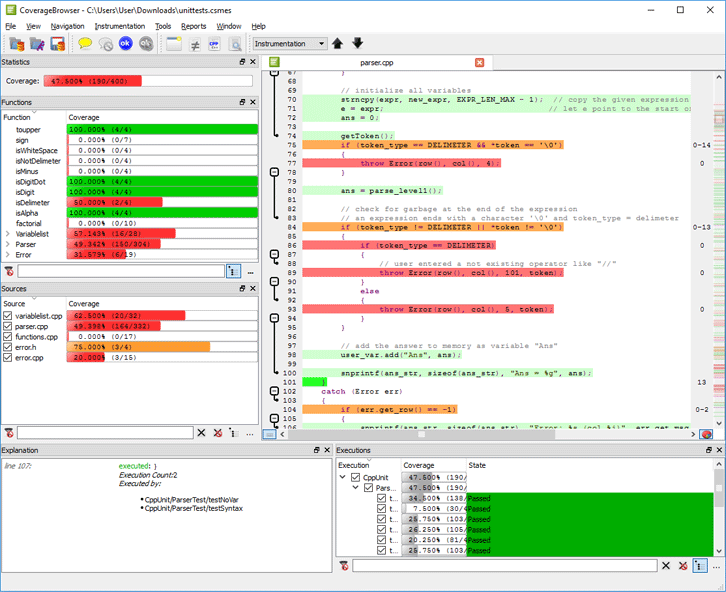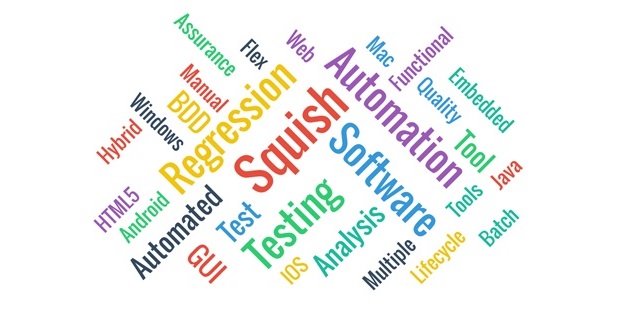froglogic is the innovative firm behind the cross-platform and cross-technology GUI test automation tool Squish. The company recently announced the GUI Test Automation Tool Squish 6.3. Below is our interview with Reginald Stadlbauer CEO and co-founder of froglogic:

Q: You’ve recently announced the release of the GUI Test Automation Tool Squish 6.3; could you tell us something more?
A: Sure. Squish GUI Tester is our flagship product which is in the market for 15 years now. Squish GUI Tester, or just “Squish” as it is mostly referred to, is a market leading tool for automated UI tests of all kinds of applications. Squish supports automated GUI testing on pretty much any platform ranging from desktop to web, mobile and embedded systems.
One of Squish’s big selling points is the way it interacts with the applications to automatically test them. Unlike many other tools which fully rely on the identifying and verifying application objects visually on the screen, Squish supports a different approach which really understands the application’s objects and properties. The pure visual approach followed by many competitors is very fragile as it fails already if small changes are done in the application (e.g. if a form doesn’t look exactly the same as before the test suddenly couldn’t find the OK button).
Squish tests on the other hand are robust against such minor changes since it knows the objects independent of its visual representation. This significantly reduces the amount of maintenance effort which is needed to keep the automated tests running with Squish compared to other tools.
With Squish version 6.3, which we release already in August 2017, we now also added support for visual object search and verification. We did this since many of our clients have highly visual applications, such as in medical devices, car infotainment systems and more, where it is necessary to also interact with application objects which cannot be identified in any other way than by searching for visuals on the screen. So in Squish 6.3 we now also support the pure visual testing approach in addition to our proven object based approach. With this we have been the first test tool in the market which fused both approaches so our users can pick now whatever solves the specific tasks best.
 Recommended: Find Out More About VocaWorks, The Next Generation Hiring Platform
Recommended: Find Out More About VocaWorks, The Next Generation Hiring Platform
Q: How did you come up to the idea for Squish?
A: Before founding our company froglogic, Harri Porten, the other founder of froglogic, and myself worked at a Norwegian company called Trolltech. We worked there as software engineers on a product called Qt. Qt is a software development library which allows to easily create GUI applications which are cross-platform. Back then this mainly meant Windows, macOS, Linux and several Unix systems (Solaris, AIX, etc.). Today this also spans to mobile and embedded platforms.
The great value of the Qt product was and is that a developer only needs to write the application once (with the Qt API) and can re-compile and run it on any platform. Before that, you typically needed to re-write most of the application, esp. the code for the graphical user interface, for each platform you wanted to support.
But now that you suddenly could easily build cross-platform applications using Qt, it was also necessary to test them!
Back then, this was in the early 2000s, there were only very few test tools on the market and those only worked for Windows. So Harri and I started toying with the idea to write a small script-based tool which allows to write automated tests for cross-platform Qt GUI applications. The thinking was that if you only need to write your application once and can run it on all platforms, the same should apply for the tests.
In 2003 we decided to leave our jobs at Trolltech and founded froglogic to let this vision become true.
We were fortunate that we quickly were able to find customers, really early adaptors, for early versions of the Squish GUI Tester. Over the time we expanded the focus of Squish to allow automating GUI tests for pretty much any platform and technology out there.
Q: Your also have a second product called Coco. Can you tell us what it is and how does it work?
A: Sure. In 2011, after we were able to grow the company organically to a good size thanks to the success of the Squish GUI Tester, we decided that we’d like to expand our product portfolio. We then started working with a very smart developer who has been tinkering with a cross-platform solution for code coverage analysis. Code coverage analysis means that one tracks exactly which parts of your application’s source code are executed. By doing such an analysis while an application is ran for testing, you can then exactly see how much of the application got tested and which source code has never been executed (and therefor is untested).
This is a very important metrics to ensure that your tests cover as much of your application as possible. For “normal” applications this tremendously helps to increase the test coverage. But for mission-critical applications, such as medical, automotive, aerospace, etc. this is a hard requirement. You really want to know that the program which controls the breaks of your car has been tested 100%. The only way to know is to use a code coverage tool which tells which parts of the program your tests really executed. Indeed all safety-standards for these industries require code coverage analysis to be done.
So back to your question, in 2011 we started working with that guy, acquired his code and hired him. We then started adding more resources to the product development and also taking care of marketing and sales of Coco. Today Coco is an important part of our product portfolio and many companies in the world use Coco to understand how much of their code gets tested. They also run many additional statistics and metrics which Coco produces to help improving the quality of their software development processes.
The nice thing is that in many cases both, Squish GUI Tester and Coco, are a good fit for our clients so many of our clients use both of our products.
 Recommended: Budbo Is Developing A Blockchain System That Will Become The Data Backbone For The Entire Cannabis Community
Recommended: Budbo Is Developing A Blockchain System That Will Become The Data Backbone For The Entire Cannabis Community
Q: Who are your ideal clients and why?
A: Generally every company who develops software is a good, potential client for us. We are not specific to any industry and among the 3000+ clients we have there are large corporations, small startups, many mid-sized businesses in many countries and many industries. Therefor I don’t think that we have an ideal client but generally we see that our clients are organizations which really care about the quality of the products they develop and deliver. This is the reason why they invest in tools to help with their software testing.
Q: How does the future look like for your products and froglogic?
A: Up next for us is the release of Squish GUI Tester 6.4. This is nearly done so this will happen in Q1 2018. The main new feature of that release will be the addition of OCR (optical character recognition) to find visual text on the screen. This completes the vision to merge the visual and object based identifications methods which we initiated with the Squish 6.3 release setting Squish further apart from the competition.
In parallel we have spent a good amount of time and resources on the topic of Artificial Intelligence in test automation. While there is a lot of hype around A.I. in the market already, we tried to clear the fog and understand where A.I. can really help in regards to automated software testing, more specifically automated graphical user interface testing.
We started prototypes for an A.I. powered GUI testing tool which will be able to fully automatically test a GUI application and report issues such as GUI and behavioral differences, bugs and crashes. This means developers can then run automated GUI tests without having to author them. This will significantly reduce the time it takes until regressions are found and increase the quality of continuous delivery.
Another topic we started researching on and are working on a first release of is to do smart analysis of the massive amounts of test data generated by GUI tests and code coverage. The goal is to help users interpret the results and take decisions from that. Today, users spend a lot of time reviewing test results and data to then understand what is going on and what next steps to take. We believe that there is a lot of potential to help with decisions by applying A.I. algorithms.
These are both very exciting topics since the time savings will be tremendous. We will come out with a first platform release for these new products, which extends our existing tools, in 2018 and will then build further on top of that.
Activate Social Media:


